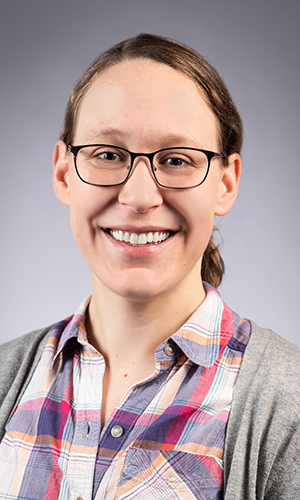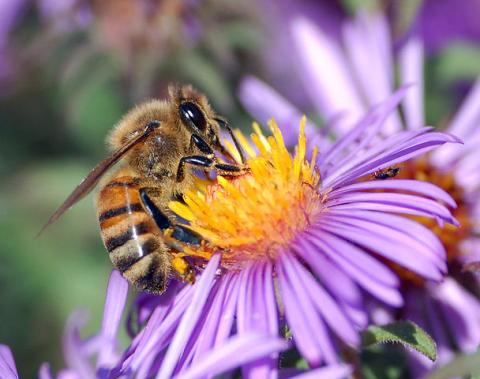Pollinator Highways
Pollinator Highways
Bees and other pollinators are slowly disappearing along with the grassland habitats that support them. Several states are working to reverse this decline by converting the edges of their roadways and highways to habitat suitable for pollinators.
Assistant Professor Lauren Sullivan is part of an interdisciplinary team from MU awarded a one-year, $60,000 grant from the Missouri Department of Transportation to conduct a systematic review of state roadway pollinator habitats and their benefits for pollinators.
“Roadways, particularly areas along highways, have long been touted as an excellent way to increase pollinator habitat because they are plentiful and commonly need to be planted with short statured plants for visibility, which can also attract pollinators,” said Sullivan. “We will look at what the ecological literature says about the best ways to create habitat for pollinators along roadways and review other states’ roadway pollinator programs to identify best practices as well as answer some practical questions related to creating habitats in this specialized environment.”
Are roadway habitats successful in increasing pollinators, where should they go, how should you build them, and how should you manage them? These are some of the many practical questions the researchers hope to answer. “We want to know what we would have to do to be successful if we were to have a roadway pollinator program here in Missouri,” said Sullivan.
The other MU researchers on the team include Kathleen Trauth, an associate professor, and Henry Brown, a research engineer, with the Department of Civil and Environmental Engineering and Noel Alyosius, an assistant professor with the Department of Biomedical, Biological & Chemical Engineering.
Sullivan said the mixture of engineers and ecologists will allow the team to look at both the ecological and the transportation/engineering sides of this type of habitat creation. “We want to create habitats that are good for pollinators but also safe for humans,” she said.
Sullivan is a plant community ecologist who studies how plants move, or disperse, within and between habitats and factors that influence this movement. Her research is focused specifically on grasslands, which are an important habitat for many pollinators. She brings not only the ecological expertise to the project but also experience working on projects to create pollinator habitats along roadways in Iowa. As a postdoctoral fellow, she also created a web app for grassland habitats in Minnesota that allows land managers to easily incorporate connectivity analysis into their management decisions. She looks forward to applying her knowledge, experiences, and approaches to the study of pollinator habitats along Missouri roadways.
Connectivity is the extent to which organisms can disperse between habitat patches on a landscape, explained Lauren. “What is really cool is that we can take our basic understanding of connectivity and dispersal and apply it to determining how connected these roadway habitats could be given the dispersal of different organisms.”

